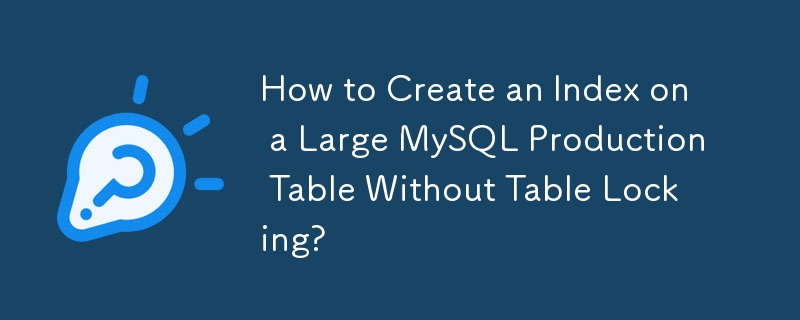

How to Create an Index on a Large MySQL Production Table Without Table Locking
Problem Background:
Creating an index on a large MySQL table can be a daunting task, especially in a production environment where uninterrupted access is crucial. Traditional CREATE INDEX statements can result in a complete table lock, blocking all concurrent operations.
MySQL Version Considerations:
Circular Masters Approach:
For MySQL versions prior to 5.6, one effective approach is the circular masters technique:
Percona's pt-online-schema-change Tool:
This tool automates the circular masters approach by:
AWS RDS Considerations:
For MySQL databases hosted on Amazon's RDS, the "Read Replica Promotion" feature can be used to facilitate schema changes without table locking. This involves making changes on a read-only slave and then promoting it to become the new master.
Alternative Techniques:
The above is the detailed content of How to Create an Index on a Large MySQL Production Table Without Table Locking?. For more information, please follow other related articles on the PHP Chinese website!
 Why does wifi have an exclamation mark?
Why does wifi have an exclamation mark?
 Apple store cannot connect
Apple store cannot connect
 Usage of items in python
Usage of items in python
 The difference between vivox100s and x100
The difference between vivox100s and x100
 Introduction to virtualization software
Introduction to virtualization software
 The difference between recv and recvfrom
The difference between recv and recvfrom
 Cloud server usage tutorial
Cloud server usage tutorial
 How many years do you have to pay for medical insurance to enjoy lifelong medical insurance?
How many years do you have to pay for medical insurance to enjoy lifelong medical insurance?




